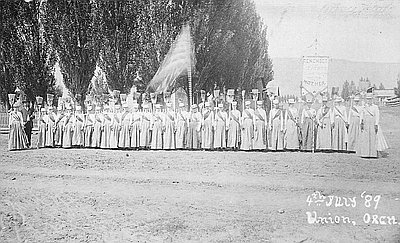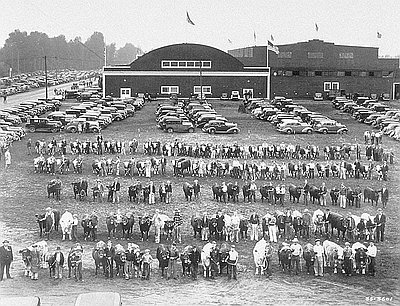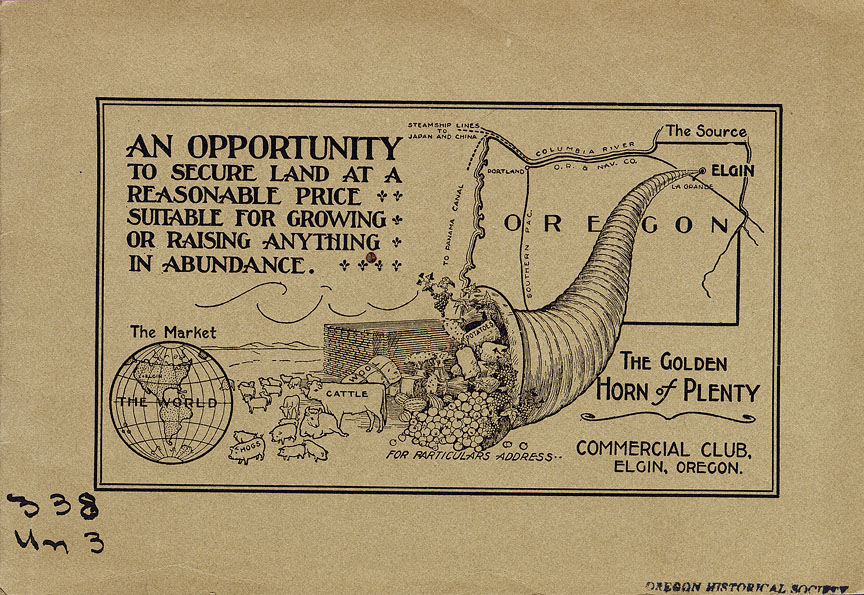- Catalog No. —
- Mss 6000
- Date —
- 1907-1908
- Era —
- 1881-1920 (Industrialization and Progressive Reform)
- Themes —
- Environment and Natural Resources, Native Americans, Oregon Trail and Resettlement, Transportation and Communication
- Credits —
- Oregon Historical Society
- Regions —
- Northeast
- Author —
- Commercial Club of Elgin, Oregon
Pamphlet, The Golden Horn of Plenty
As immigrants populated the Willamette Valley in the 1840s and 1850s, newcomers to Oregon Territory looked east of the Cascade Mountains for inexpensive land for wheat farming and cattle and sheep ranching. In the early 1880s, the completion of railroad tracks connected northeast Oregon’s Union County to Portland markets. A railroad extension to the town of Elgin in 1890 made it the transportation hub for northern Union County and Wallowa County. In 1900, 16,070 people lived in Union County and 5,538 had settled in Wallowa County. Elgin’s growth boom ended in 1908, when the railroad was extended north to the Joseph, a town named for a leader of the Wallowa Valley band of the Nez Perce Indians. When Euro-American settlement increased in northeast Oregon in the early 1870s, the U.S. government ordered Native people to move out of their homeland. In 1877, some of Chief Joseph’s band responded by attacking and killing some settlers. Joseph and his people then skirmished with the U.S. Army during a 1,400-mile retreat through Idaho, Yellowstone National Park, and Montana, where most of them surrendered in the Bear’s Paw Mountains, just south of the Canadian border.
Written by Kathy Tucker, © Oregon Historical Society, 2002.
Related Historical Records
-
Chief Joseph's Own Story
This excerpt is from a pamphlet titled “Chief Joseph’s Story,” a reprint of a speech which was transcribed and published in the April 1879 edition of the North American …

-
Broom Brigade of Union, 1889
This photograph was taken on July 4, 1889. It shows the Broom Brigade of Union, a town in northeastern Oregon’s Grande Ronde Valley. Broom brigades were women’s organizations …

-
Union Stockyards Cattle Show
People and animals lined up for a livestock show on the grounds of the Portland Union Stockyards. The first part of the twentieth century was a busy time …

